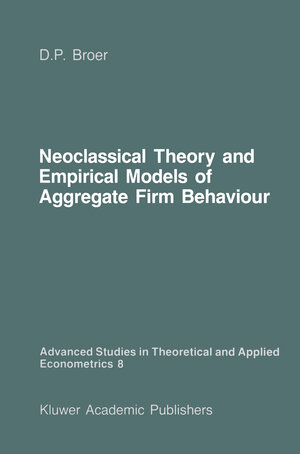
×
![Buchcover ISBN 9789401084949]()
Neoclassical Theory and Empirical Models of Aggregate Firm Behaviour
von D. Peter BroerInhaltsverzeichnis
- I. Introduction.
- 1.1 Scope and significance.
- 1.2 Methodological considerations.
- 1.3 An outline of the remaining chapters.
- II. Some elements from the neoclassical research programme of the firm.
- 2.1 Introduction.
- 2.2 Keynesian theories of the firm.
- 2.3 The neoclassical programme.
- 2.4 An outline of the structure of the models of this study.
- III. A neoclassical model of a firm subject to a putty-putty technology.
- 3.1 The market- and information structure.
- 3.2 The production structure.
- 3.3 The full model.
- 3.4 Existence of an optimal policy.
- 3.5 Necessary conditions for an optimal policy.
- 3.6 Approximate solutions.
- 3.7 Comparison with the stock adjustment specification.
- IV. Vintage technologies and the theory of the firm.
- 4.1 Introduction.
- 4.2 The structure of putty-clay models.
- 4.3 A general putty-clay model.
- V Estimation and empirical testing of the putty-putty model.
- 5.1 Discrete-time adaptions.
- 5.2 The construction of the expectations.
- 5.3 Estimation.
- 5.4 Model specification tests.
- 5.5 Model characteristics.
- 5.6 Trends and fluctuations.
- VI. Estimation and testing of the putty-clay model.
- 6.1 Discrete-time adaptions.
- 6.2 Estimation.
- 6.3 Model specification tests.
- 6.4 Model characteristics.
- 6.4.1 Stochastic stability.
- 6.5 Trends and fluctuations.
- VII. Summary and conclusion.
- 7.1 Summary.
- 7.2 Conclusion.
- List of symbols.
- References.
- Author index.




